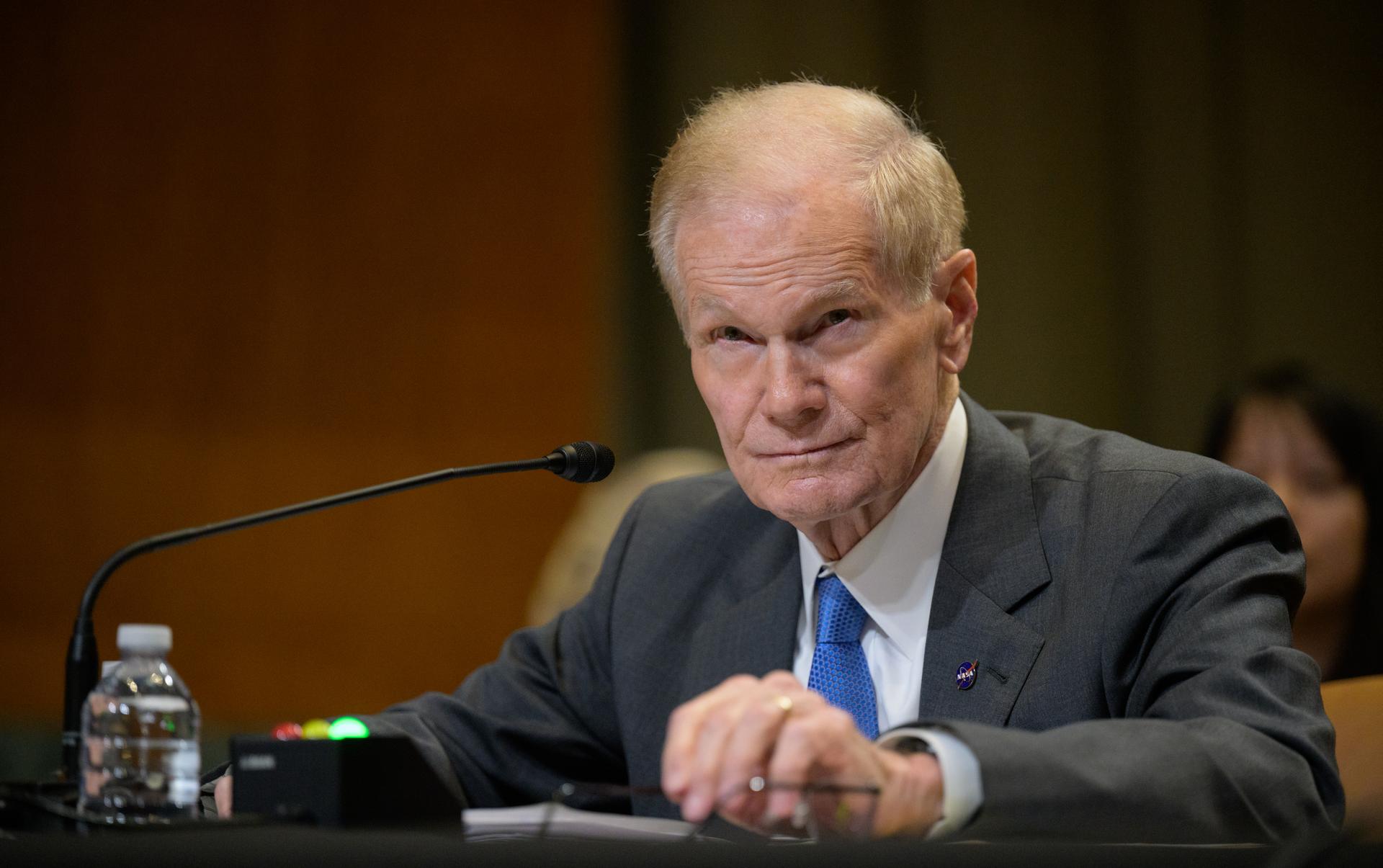New Executive Order tries to curb colleges’ attempts to circumvent ban on affirmative action
As you surely know, the U.S. Supreme Court banned race-based college admissions in the highly publicized Students for Fair Admissions v. Harvard case in 2023, (Military academies were an exception.) The vote, along the usual lines, was 6-2 (Sotomayor and Kagan dissenting) when Harvard was the defendant (Justice Jackson recused herself), and 6-3 for the … Continue reading New Executive Order tries to curb colleges’ attempts to circumvent ban on affirmative action

As you surely know, the U.S. Supreme Court banned race-based college admissions in the highly publicized Students for Fair Admissions v. Harvard case in 2023, (Military academies were an exception.) The vote, along the usual lines, was 6-2 (Sotomayor and Kagan dissenting) when Harvard was the defendant (Justice Jackson recused herself), and 6-3 for the University of North Carolina case. As Wikipedia notes, the majority opinion, written by Justice Roberts, said this:
Justice Roberts wrote that the Equal Protection Clause of the Fourteenth Amendment applies “without regard to any difference of race, of color, or of nationality” and thus must apply to every person. As such, “Eliminating racial discrimination means eliminating all of it”, adding that “For ‘[t]he guarantee of equal protection cannot mean one thing when applied to one individual and something else when applied to a person of another color.‘ ” Roberts wrote that the affirmative action programs “lack sufficiently focused and measurable objectives warranting the use of race, unavoidably employ race in a negative manner, involve racial stereotyping, and lack meaningful end points. We have never permitted admissions programs to work in that way, and we will not do so today”.
There was vocal opposition by many colleges and universities, who said they were committed to promoting (racial) diversity, though they grudgingly admitted they’d follow the law. But, as Jonathan Turley points out, they really didn’t. All of us at universities have seen how schools have tried to do an end run the law, including adding admissions essays in which students could tout their race by relating how they overcame difficulties in their past. Turley:
We have previously discussed how universities and colleges openly planned for the final rejection of race-based admissions criteria. Many universities denounced the Supreme Court and pledged to “reimagine” admissions. Medical schools are being encouraged to “pivot” to continue reaching diversity goals for entering classes. More schools are moving to dump objective standardized tests (or make them optional) in favor of more subjective scoring to shield racial criteria for admissions. Others are tweaking essay prompts to shift enhancements based on race.
Roberts himself anticipated some of those efforts in referencing how students could still self-identify as minorities in discussing their views or struggle with racial discrimination.
The use of federal authority to investigate such circumvention could be a major change for higher education. Most schools have resisted transparency or disclosures on such practices and private litigants often find it difficult to get courts to order discovery. This could expose schools to greater public scrutiny.
The question is how the government will address circumventions, such as using essay prompts to reintroduce racial identification. In my view, this would raise serious free speech issues for both schools and students.
The outcomes of this decision were not exactly what you’d expect: according to the NYT, black and Hispanic enrollment declined, but white and Asian enrollment didn’t increase, more students did not disclose their race, there was a HUGE variation in outcomes among colleges, and we have only one year of data to see what shook out.
The free speech issue is one that just arose when Trump issued his new executive order (below the fold) on DEI. I’ve already addressed the elimination of DEI in government, but this order extends it to institutes of higher education. Here’s the relevant part taken from Turley’s column, which reproduces it all:
Sec. 5. Other Actions. Within 120 days of this order, the Attorney General and the Secretary of Education shall jointly issue guidance to all State and local educational agencies that receive Federal funds, as well as all institutions of higher education that receive Federal grants or participate in the Federal student loan assistance program under Title IV of the Higher Education Act, 20 U.S.C. 1070 et seq., regarding the measures and practices required to comply with Students for Fair Admissions, Inc. v. President and Fellows of Harvard College, 600 U.S. 181 (2023).
Sec. 6. Severability. If any provision of this order, or the application of any provision to any person or circumstance, is held to be invalid, the remainder of this order and the application of its provisions to any other persons or circumstances shall not be affected thereby.
Sec. 7. Scope. (a) This order does not apply to lawful Federal or private-sector employment and contracting preferences for veterans of the U.S. armed forces or persons protected by the Randolph-Sheppard Act, 20 U.S.C. 107 et seq.
(b) This order does not prevent State or local governments, Federal contractors, or Federally-funded State and local educational agencies or institutions of higher education from engaging in First Amendment-protected speech.
That looks pretty straightforward but, as Turley says, litigation is in store:
However, the greatest contribution could be the exposure of circumvention systems or practices. In his order, Trump wrote that “Institutions of higher education have adopted and actively use dangerous, demeaning, and immoral race- and sex-based preferences under the guise of so-called ‘diversity, equity, and inclusion.’” His order directs all federal agencies to each identify up to nine corporations, large non-profit groups, or institutions of higher education with endowments exceeding $1 billion which are violating civil rights laws.
The agencies are to develop an action plan against “illegal discrimination or preferences.” Those preferences are described as not only violating “the text and spirit of our longstanding Federal civil-rights laws,” but “also undermine our national unity.” The plan is to consider federal litigation and regulatory actions.
The order also instructs incoming Attorney General Pam Bondi and Secretary of Education Linda M. McMahon to issue guidance within 120 days to all state and local educational agencies on how to abide by the 2023 Supreme Court ruling that struck down race-based affirmative action policies. That could prove a major new element for higher education in setting out criteria for evaluating compliance by schools.
This is clearly going to generate intense litigation. The definition of DEI is vague and is likely to draw challenges. For example, organizations will argue that the following line could become dangerously subjective in its application or enforcement:
“Terminate all ‘diversity,’ ‘equity,’ ‘equitable decision-making,’ ‘equitable deployment of financial and technical assistance,’ ‘advancing equity,’ and like mandates, requirements, programs, or activities, as appropriate.”
Such vague terms are likely to draw judicial scrutiny and could sweep too broadly for figures like Chief Justice Roberts. Agencies will need to narrow and add greater clarity on these terms as they move forward with this mandate.
Moreover, while the EO expressly states that it is not to be construed as limiting free speech, these policies and programs could easily contravene that right. Federal contacts will now have an affirmative statement of compliance by organizations, including universities and colleges, that they do not have DEI components.
An affirmative statement of compliance could, I suppose, also be construed as compelled speech. “Equity” is not defined, and so on. It seems to me that there are better ways to monitor compliance with the Supreme Court’s order. After all, the Harvard case rested on statistical analysis, interviews, and the like, and showed, at least to the Court’s satisfaction, that Harvard was not complying with standing law (presumably the Bakke case).
Click “read more” to see the order
01/21/25 EXECUTIVE ORDER ENDING ILLEGAL DISCRIMINATION AND RESTORING MERIT-BASED OPPORTUNITY
By the authority vested in me as President by the Constitution and the laws of the United States of America, it is hereby ordered:
Section 1. Purpose. Longstanding Federal civil-rights laws protect individual Americans from discrimination based on race, color, religion, sex, or national origin. These civil-rights protections serve as a bedrock supporting equality of opportunity for all Americans. As President, I have a solemn duty to ensure that these laws are enforced for the benefit of all Americans.
Yet today, roughly 60 years after the passage of the Civil Rights Act of 1964, critical and influential institutions of American society, including the Federal Government, major corporations, financial institutions, the medical industry, large commercial airlines, law enforcement agencies, and institutions of higher education have adopted and actively use dangerous, demeaning, and immoral race- and sex-based preferences under the guise of so-called “diversity, equity, and inclusion” (DEI) or “diversity, equity, inclusion, and accessibility” (DEIA) that can violate the civil-rights laws of this Nation.
Illegal DEI and DEIA policies not only violate the text and spirit of our longstanding Federal civil-rights laws, they also undermine our national unity, as they deny, discredit, and undermine the traditional American values of hard work, excellence, and individual achievement in favor of an unlawful, corrosive, and pernicious identity-based spoils system. Hardworking Americans who deserve a shot at the American Dream should not be stigmatized, demeaned, or shut out of opportunities because of their race or sex.
These illegal DEI and DEIA policies also threaten the safety of American men, women, and children across the Nation by diminishing the importance of individual merit, aptitude, hard work, and determination when selecting people for jobs and services in key sectors of American society, including all levels of government, and the medical, aviation, and law-enforcement communities. Yet in case after tragic case, the American people have witnessed first-hand the disastrous consequences of illegal, pernicious discrimination that has prioritized how people were born instead of what they were capable of doing.
The Federal Government is charged with enforcing our civil-rights laws. The purpose of this order is to ensure that it does so by ending illegal preferences and discrimination.
Sec. 2. Policy. It is the policy of the United States to protect the civil rights of all Americans and to promote individual initiative, excellence, and hard work. I therefore order all executive departments and agencies (agencies) to terminate all discriminatory and illegal preferences, mandates, policies, programs, activities, guidance, regulations, enforcement actions, consent orders, and requirements. I further order all agencies to enforce our longstanding civil-rights laws and to combat illegal private-sector DEI preferences, mandates, policies, programs, and activities.
Sec. 3. Terminating Illegal Discrimination in the Federal Government.
(a) The following executive actions are hereby revoked:
(i) Executive Order 12898 of February 11, 1994 (Federal Actions to Address Environmental Justice in Minority Populations and Low-Income Populations);
(ii) Executive Order 13583 of August 18, 2011 (Establishing a Coordinated Government-wide Initiative to Promote Diversity and Inclusion in the Federal Workforce);
(iii) Executive Order 13672 of July 21, 2014 (Further Amendments to Executive Order 11478, Equal Employment Opportunity in the Federal Government, and Executive Order 11246, Equal Employment Opportunity); and
(iv) The Presidential Memorandum of October 5, 2016 (Promoting Diversity and Inclusion in the National Security Workforce).
(b) The Federal contracting process shall be streamlined to enhance speed and efficiency, reduce costs, and require Federal contractors and subcontractors to comply with our civil-rights laws. Accordingly:
(i) Executive Order 11246 of September 24, 1965 (Equal Employment Opportunity), is hereby revoked. For 90 days from the date of this order, Federal contractors may continue to comply with the regulatory scheme in effect on January 20, 2025.
(ii) The Office of Federal Contract Compliance Programs within the Department of Labor shall immediately cease: (A) Promoting “diversity”; (B) Holding Federal contractors and subcontractors responsible for taking “affirmative action”; and (C) Allowing or encouraging Federal contractors and subcontractors to engage in workforce balancing based on race, color, sex, sexual preference, religion, or national origin.
(iii) In accordance with Executive Order 13279 of December 12, 2002 (Equal Protection of the Laws for Faith-Based and Community Organizations), the employment, procurement, and contracting practices of Federal contractors and subcontractors shall not consider race, color, sex, sexual preference, religion, or national origin in ways that violate the Nation’s civil rights laws.
(iv) The head of each agency shall include in every contract or grant award:
(A) A term requiring the contractual counterparty or grant recipient to agree that its compliance in all respects with all applicable Federal anti-discrimination laws is material to the government’s payment decisions for purposes of section 3729(b)(4) of title 31, United States Code; and
(B) A term requiring such counterparty or recipient to certify that it does not operate any programs promoting DEI that violate any applicable Federal anti-discrimination laws.
(c) The Director of the Office of Management and Budget (OMB), with the assistance of the Attorney General as requested, shall:
(i) Review and revise, as appropriate, all Government-wide processes, directives, and guidance;
(ii) Excise references to DEI and DEIA principles, under whatever name they may appear, from Federal acquisition, contracting, grants, and financial assistance procedures to streamline those procedures, improve speed and efficiency, lower costs, and comply with civil-rights laws; and
(iii) Terminate all “diversity,” “equity,” “equitable decision-making,” “equitable deployment of financial and technical assistance,” “advancing equity,” and like mandates, requirements, programs, or activities, as appropriate.
Sec. 4. Encouraging the Private Sector to End Illegal DEI Discrimination and Preferences.
(a) The heads of all agencies, with the assistance of the Attorney General, shall take all appropriate action with respect to the operations of their agencies to advance in the private sector the policy of individual initiative, excellence, and hard work identified in section 2 of this order.
(b) To further inform and advise me so that my Administration may formulate appropriate and effective civil-rights policy, the Attorney General, within 120 days of this order, in consultation with the heads of relevant agencies and in coordination with the Director of OMB, shall submit a report to the Assistant to the President for Domestic Policy containing recommendations for enforcing Federal civil-rights laws and taking other appropriate measures to encourage the private sector to end illegal discrimination and preferences, including DEI. The report shall contain a proposed strategic enforcement plan identifying:
(i) Key sectors of concern within each agency’s jurisdiction;
(ii) The most egregious and discriminatory DEI practitioners in each sector of concern;
(iii) A plan of specific steps or measures to deter DEI programs or principles (whether specifically denominated “DEI” or otherwise) that constitute illegal discrimination or preferences. As a part of this plan, each agency shall identify up to nine potential civil compliance investigations of publicly traded corporations, large non-profit corporations or associations, foundations with assets of 500 million dollars or more, State and local bar and medical associations, and institutions of higher education with endowments over 1 billion dollars;
(iv) Other strategies to encourage the private sector to end illegal DEI discrimination and preferences and comply with all Federal civil-rights laws;
(v) Litigation that would be potentially appropriate for Federal lawsuits, intervention, or statements of interest; and
(vi) Potential regulatory action and sub-regulatory guidance.
Sec. 5. Other Actions. Within 120 days of this order, the Attorney General and the Secretary of Education shall jointly issue guidance to all State and local educational agencies that receive Federal funds, as well as all institutions of higher education that receive Federal grants or participate in the Federal student loan assistance program under Title IV of the Higher Education Act, 20 U.S.C. 1070 et seq., regarding the measures and practices required to comply with Students for Fair Admissions, Inc. v. President and Fellows of Harvard College, 600 U.S. 181 (2023).
Sec. 6. Severability. If any provision of this order, or the application of any provision to any person or circumstance, is held to be invalid, the remainder of this order and the application of its provisions to any other persons or circumstances shall not be affected thereby.
Sec. 7. Scope. (a) This order does not apply to lawful Federal or private-sector employment and contracting preferences for veterans of the U.S. armed forces or persons protected by the Randolph-Sheppard Act, 20 U.S.C. 107 et seq.
(b) This order does not prevent State or local governments, Federal contractors, or Federally-funded State and local educational agencies or institutions of higher education from engaging in First Amendment-protected speech.
(c) This order does not prohibit persons teaching at a Federally funded institution of higher education as part of a larger course of academic instruction from advocating for, endorsing, or promoting the unlawful employment or contracting practices prohibited by this order.
Sec. 8. General Provisions. (a) Nothing in this order shall be construed to impair or otherwise affect: (i) the authority granted by law to an executive department, agency, or the head thereof; or (ii) the functions of the Director of the Office of Management and Budget relating to budgetary, administrative, or legislative proposals.
(b) This order shall be implemented consistent with applicable law and subject to the availability of appropriations.
(c) This order is not intended to and does not create any right or benefit, substantive or procedural, enforceable at law or in equity by any party against the United States, its departments, agencies, or entities, its officers, employees, or agents, or any other person.
THE WHITE HOUSE, January 21, 2025.
What's Your Reaction?








































